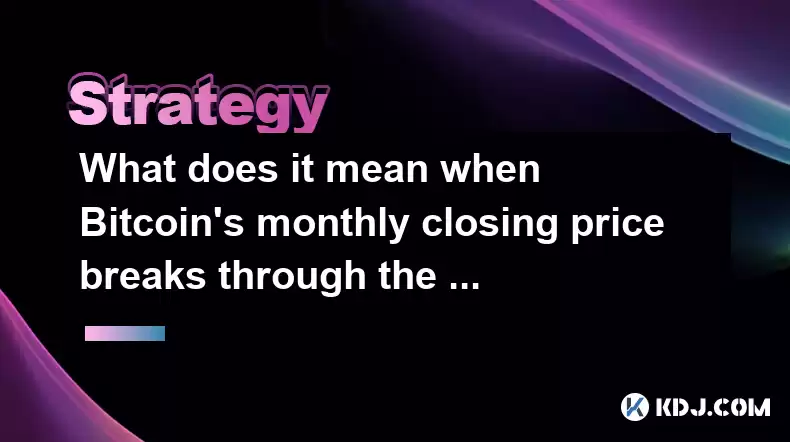-
 Bitcoin
Bitcoin $117500
2.15% -
 Ethereum
Ethereum $3911
6.19% -
 XRP
XRP $3.316
10.79% -
 Tether USDt
Tether USDt $1.000
0.01% -
 BNB
BNB $787.2
2.24% -
 Solana
Solana $175.2
4.15% -
 USDC
USDC $0.9999
0.00% -
 Dogecoin
Dogecoin $0.2225
8.40% -
 TRON
TRON $0.3383
0.28% -
 Cardano
Cardano $0.7868
6.02% -
 Stellar
Stellar $0.4382
9.34% -
 Hyperliquid
Hyperliquid $40.92
7.56% -
 Sui
Sui $3.764
7.63% -
 Chainlink
Chainlink $18.48
10.66% -
 Bitcoin Cash
Bitcoin Cash $582.1
1.88% -
 Hedera
Hedera $0.2601
6.30% -
 Avalanche
Avalanche $23.33
4.94% -
 Ethena USDe
Ethena USDe $1.001
0.02% -
 Litecoin
Litecoin $122.3
2.04% -
 UNUS SED LEO
UNUS SED LEO $8.969
-0.27% -
 Toncoin
Toncoin $3.339
0.86% -
 Shiba Inu
Shiba Inu $0.00001287
4.30% -
 Uniswap
Uniswap $10.43
7.38% -
 Polkadot
Polkadot $3.861
5.08% -
 Dai
Dai $1.000
0.02% -
 Bitget Token
Bitget Token $4.513
3.41% -
 Monero
Monero $267.7
-6.18% -
 Cronos
Cronos $0.1499
4.14% -
 Pepe
Pepe $0.00001110
5.15% -
 Aave
Aave $284.9
8.28%
What does it mean when Bitcoin's monthly closing price breaks through the previous high?
When Bitcoin's monthly close breaks the previous high, it signals a strong bullish trend, often leading to increased buying and potential bull runs.
Apr 19, 2025 at 04:36 pm

When Bitcoin's monthly closing price breaks through the previous high, it is a significant event that can have various implications for investors and the broader cryptocurrency market. This phenomenon often indicates a strong bullish trend and can signal the start of a new upward price movement. To fully understand what this means, it's essential to delve into the technical analysis, market psychology, and historical data surrounding these events.
Understanding Monthly Closing Prices
The monthly closing price of Bitcoin is the final price at which the cryptocurrency trades on the last day of the month. This figure is considered a key indicator by many traders and analysts because it reflects the overall sentiment and momentum of the market over the entire month. When this closing price surpasses the highest monthly close previously recorded, it suggests that the market has achieved a new level of strength and confidence.
Technical Analysis and Bullish Signals
From a technical analysis perspective, breaking through the previous high monthly close is often seen as a bullish signal. This event can be interpreted as a breakout, which is a common pattern where the price moves above a resistance level, potentially leading to further upward movement. Traders might look at this as a confirmation that the bullish trend is likely to continue, prompting them to enter or increase their positions in Bitcoin.
Market Psychology and Investor Sentiment
The market psychology behind a new monthly high can be quite powerful. When investors see that Bitcoin has broken through a significant resistance level, it can boost their confidence in the asset's future performance. This can lead to increased buying pressure as more investors jump into the market, hoping to ride the upward trend. Conversely, those who were holding short positions might be forced to cover, further driving the price up.
Historical Context and Precedents
Looking at historical data, there have been several instances where Bitcoin's monthly closing price breaking through the previous high has preceded significant bull runs. For example, in late 2016 and early 2017, Bitcoin broke through several monthly highs, which was followed by a massive surge in price throughout the year. Similarly, in late 2020, a new monthly high was set, which preceded the bull run into 2021. These historical precedents can provide valuable insights for investors trying to gauge the potential impact of a new monthly high.
Impact on Market Volatility
Breaking through the previous high can also have implications for market volatility. As the price moves into uncharted territory, there can be increased uncertainty and fluctuations. This can attract more speculative trading and lead to heightened volatility. Investors should be prepared for potential swings in price and consider their risk tolerance when navigating such periods.
Trading Strategies and Considerations
When Bitcoin's monthly closing price breaks through the previous high, traders might consider various strategies to capitalize on the potential upward movement. Some might opt for a long position, betting that the price will continue to rise. Others might use stop-loss orders to protect against potential downturns. It's important for traders to conduct thorough research and consider their overall investment strategy before making any decisions.
Monitoring Other Market Indicators
While a new monthly high is a significant event, it's crucial for investors to monitor other market indicators to get a comprehensive view of the market. This might include looking at trading volume, market capitalization, and various technical indicators like the Relative Strength Index (RSI) or Moving Averages. These additional data points can help investors make more informed decisions and better understand the broader market context.
Institutional and Retail Investor Reactions
The reaction of institutional and retail investors to a new monthly high can also influence the market. Institutional investors, with their significant capital, can have a substantial impact on the price. If they interpret the new high as a sign of a strong bull market, they might increase their investments, further driving up the price. Retail investors, on the other hand, might be more influenced by media coverage and social sentiment, which can lead to rapid buying or selling.
Regulatory and Economic Factors
Regulatory and economic factors can also play a role in how the market reacts to a new monthly high. Positive regulatory news or favorable economic conditions can enhance the bullish sentiment, while negative developments can dampen the market's enthusiasm. Investors should stay informed about these external factors and consider how they might impact Bitcoin's price trajectory.
Frequently Asked Questions
Q: How often does Bitcoin's monthly closing price break through the previous high?
A: The frequency of Bitcoin's monthly closing price breaking through the previous high can vary significantly. Historically, these events have occurred during periods of strong bullish trends, such as in 2017 and 2020-2021. However, the exact frequency depends on market conditions and can be influenced by a variety of factors, including economic conditions, regulatory changes, and overall investor sentiment.
Q: Can a new monthly high be a false signal?
A: Yes, a new monthly high can sometimes be a false signal. While it often indicates a strong bullish trend, there can be instances where the price quickly reverses after breaking through the previous high. This can happen due to various factors, such as sudden shifts in market sentiment, unexpected news events, or manipulation by large traders. It's important for investors to use additional technical and fundamental analysis to confirm the strength of the signal.
Q: How should investors react to a new monthly high?
A: Investors should react to a new monthly high with caution and thorough analysis. While it can be a bullish signal, it's important to consider other market indicators and the broader economic context. Some investors might choose to increase their positions, while others might wait for further confirmation of the trend. Setting stop-loss orders and maintaining a diversified portfolio can help manage risk during such periods.
Q: Does a new monthly high always lead to a bull run?
A: No, a new monthly high does not always lead to a bull run. While it can be a strong indicator of a bullish trend, other factors such as market sentiment, economic conditions, and regulatory news can influence the market's direction. Investors should not rely solely on this one indicator but should consider a comprehensive analysis of the market.
Disclaimer:info@kdj.com
The information provided is not trading advice. kdj.com does not assume any responsibility for any investments made based on the information provided in this article. Cryptocurrencies are highly volatile and it is highly recommended that you invest with caution after thorough research!
If you believe that the content used on this website infringes your copyright, please contact us immediately (info@kdj.com) and we will delete it promptly.
- Tron's Sell-Off Spurs Altcoin Shift: What's Next for TRX?
- 2025-08-08 08:30:12
- Sleep Token's US Takeover: Thornhill Rides the 'Even In Arcadia' Wave
- 2025-08-08 08:30:12
- FTT Token's Wild Ride: Creditor Repayments vs. Market Drop - A New Yorker's Take
- 2025-08-08 07:10:12
- Floki Crypto Price Prediction: Riding the Robinhood Rocket or Just a Meme?
- 2025-08-08 07:15:12
- EigenLayer, Restaking, and Ethereum: Navigating the Hype and the Hazards
- 2025-08-08 06:30:12
- Super Bowl 59: Jon Batiste to Jazz Up the National Anthem
- 2025-08-08 06:30:12
Related knowledge

How to avoid common crypto investment mistakes?
Jul 13,2025 at 01:35am
Understanding the Risks of Crypto InvestmentInvesting in cryptocurrency can be highly rewarding, but it also comes with significant risks. One of the ...

What is a long-short crypto strategy?
Jul 15,2025 at 10:56am
Understanding the Basics of a Long-Short Crypto StrategyA long-short crypto strategy is an investment approach where traders simultaneously take long ...

What is a long-short crypto strategy?
Jul 11,2025 at 01:28pm
Understanding the Basics of Long-Short Crypto StrategyA long-short crypto strategy is an investment approach where traders take both long and short po...

How to use the RSI indicator for crypto?
Jul 12,2025 at 03:56pm
Understanding the RSI Indicator in Cryptocurrency TradingThe Relative Strength Index (RSI) is a momentum oscillator used to measure the speed and chan...

Is copy trading a good strategy for crypto beginners?
Jul 12,2025 at 08:28am
Understanding Copy Trading in the Cryptocurrency MarketCopy trading is a strategy where novice traders replicate the trades of experienced investors a...

How to build a crypto portfolio with $1000?
Jul 13,2025 at 08:14pm
Understanding the Basics of Cryptocurrency InvestmentBuilding a crypto portfolio with $1000 starts with understanding the fundamentals of cryptocurren...

How to avoid common crypto investment mistakes?
Jul 13,2025 at 01:35am
Understanding the Risks of Crypto InvestmentInvesting in cryptocurrency can be highly rewarding, but it also comes with significant risks. One of the ...

What is a long-short crypto strategy?
Jul 15,2025 at 10:56am
Understanding the Basics of a Long-Short Crypto StrategyA long-short crypto strategy is an investment approach where traders simultaneously take long ...

What is a long-short crypto strategy?
Jul 11,2025 at 01:28pm
Understanding the Basics of Long-Short Crypto StrategyA long-short crypto strategy is an investment approach where traders take both long and short po...

How to use the RSI indicator for crypto?
Jul 12,2025 at 03:56pm
Understanding the RSI Indicator in Cryptocurrency TradingThe Relative Strength Index (RSI) is a momentum oscillator used to measure the speed and chan...

Is copy trading a good strategy for crypto beginners?
Jul 12,2025 at 08:28am
Understanding Copy Trading in the Cryptocurrency MarketCopy trading is a strategy where novice traders replicate the trades of experienced investors a...

How to build a crypto portfolio with $1000?
Jul 13,2025 at 08:14pm
Understanding the Basics of Cryptocurrency InvestmentBuilding a crypto portfolio with $1000 starts with understanding the fundamentals of cryptocurren...
See all articles

























































































